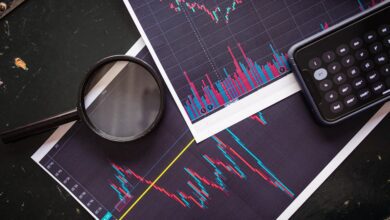Commodities Trading Explained: Essential Strategies and Insights for Successful Trading in Raw Materials

Commodities trading has emerged as a vital component of the global financial landscape, offering investors the opportunity to trade raw materials like gold, silver, oil, and agricultural products. As the demand for these essential resources continues to fluctuate due to economic changes, geopolitical tensions, and environmental factors, understanding the intricacies of commodities trading becomes crucial for both novice and experienced traders alike. In this article, we will explore the fundamentals of commodities trading, highlighting the dynamics of the market and the various trading strategies that can be employed. From futures trading and options trading to day trading techniques, we will delve into the key approaches that can maximize your trading potential. Additionally, we will emphasize the importance of risk management and market analysis, providing essential tips for success in this ever-evolving arena. Whether you are interested in energy trading, derivatives trading, or even engaging with online trading platforms, mastering the art and science of commodities trading is vital for navigating today's complex financial markets.
- 1. Understanding Commodities Trading: An Overview of Raw Materials and Market Dynamics
- 2. Key Trading Strategies for Commodities: From Futures Trading to Day Trading Techniques
- 3. Risk Management and Market Analysis in Commodities Trading: Essential Tips for Success
1. Understanding Commodities Trading: An Overview of Raw Materials and Market Dynamics
Understanding commodities trading involves delving into the world of raw materials, including precious metals like gold and silver, energy resources such as oil, and agricultural products like wheat and corn. Commodities trading is a vital component of the global economy, influencing everything from consumer prices to investment strategies.
At its core, commodities trading can take various forms, including futures trading, options trading, and spot trading. Traders engage in these markets through online trading platforms, utilizing different strategies such as day trading, swing trading, and scalping to capitalize on price fluctuations. Each method has its unique characteristics; for example, futures trading allows investors to buy or sell an asset at a predetermined price at a future date, while options trading grants the right, but not the obligation, to make a transaction.
Market dynamics in commodities trading are influenced by multiple factors, including supply and demand, geopolitical events, and economic indicators. Fundamental analysis plays a crucial role in understanding these dynamics, as it helps traders assess how external factors can impact prices. Technical analysis, on the other hand, focuses on historical price movements to forecast future trends, essential for developing effective trading strategies.
Risk management is paramount in commodities trading. Traders often utilize leverage trading and margin trading to enhance potential gains, but these practices also increase exposure to losses. Therefore, implementing sound risk management strategies is crucial. Many traders also explore derivatives trading, including contracts for difference (CFD trading) and binary options, to diversify their portfolios and manage risks effectively.
Psychological factors can significantly impact trading decisions. Trading psychology encompasses the emotional aspects of trading, which can affect decision-making and overall performance. Understanding one's own psychological tendencies and maintaining discipline can lead to more successful trading outcomes.
In summary, commodities trading offers a diverse array of opportunities for traders. By leveraging market analysis, employing various trading strategies, and practicing effective risk management, traders can navigate the complexities of the commodities markets and enhance their trading experience. Whether engaging in energy trading, agricultural trading, or precious metals trading, a solid grasp of the market dynamics is essential for success in this field.
References:
– Investopedia. (2023). Commodities Trading: The Complete Guide. Retrieved from [Investopedia](https://www.investopedia.com/terms/c/commodities-trading.asp)
– CME Group. (2023). Understanding Futures and Options. Retrieved from [CME Group](https://www.cmegroup.com/education/futures-options.html)
– Trading Psychology. (2023). The Importance of Psychology in Trading. Retrieved from [Trading Psychology](https://www.tradingpsychology.com)
2. Key Trading Strategies for Commodities: From Futures Trading to Day Trading Techniques
When it comes to commodities trading, understanding various trading strategies is vital for success. Traders can choose from a range of approaches such as futures trading, day trading, and swing trading, each with its own unique characteristics and risk profiles.
Futures trading is one of the most common strategies in commodities markets. This involves entering into contracts to buy or sell raw materials at a predetermined price on a specified future date. Traders use futures to hedge against price fluctuations or to speculate on market movements. Successful futures trading requires a solid grasp of market analysis, including both technical analysis for short-term price trends and fundamental analysis to understand supply and demand dynamics.
Day trading is another popular strategy that involves making multiple trades within a single day, capitalizing on small price movements. Day traders often rely on real-time market data and trading psychology to make quick decisions. This strategy is prevalent among those who leverage online trading platforms, as it allows for immediate execution of trades and the use of advanced tools for market analysis. The rapid pace of day trading often requires techniques such as scalping, where traders aim to profit from minor price changes.
Swing trading, on the other hand, is a medium-term strategy where traders hold positions for several days or weeks, aiming to capture price swings in the market. This strategy is suitable for those who prefer a less frantic pace than day trading while still seeking to make profits from market movements. Swing traders often utilize a combination of technical indicators and fundamental analysis to identify entry and exit points.
Risk management is crucial in all these trading strategies. Traders must be aware of the risks associated with leverage trading and margin trading, which can amplify both gains and losses. Implementing effective risk management techniques can help mitigate potential losses and protect capital.
In addition to these strategies, there are also newer methods like algorithmic trading and high-frequency trading that utilize advanced algorithms to execute trades at lightning speed. These strategies can be particularly effective in the commodities market, where price movements can be influenced by a multitude of factors, including geopolitical events and weather conditions.
Ultimately, the choice of trading strategy in commodities trading—whether through futures trading, day trading, or swing trading—should align with the trader's goals, risk tolerance, and market analysis capabilities. By understanding and applying these strategies effectively, traders can enhance their potential for success in the dynamic world of commodities trading.
3. Risk Management and Market Analysis in Commodities Trading: Essential Tips for Success
In the world of commodities trading, understanding risk management and market analysis is crucial for achieving long-term success. Whether you are engaged in day trading, swing trading, or futures trading, implementing effective strategies can help you navigate the volatility of raw materials like gold, silver, oil, and agricultural products.
One of the foundational pillars of successful trading is risk management. It involves identifying potential risks and taking steps to mitigate them. Here are some essential tips for managing risk in commodities trading:
– **Utilize Stop-Loss Orders:** Set stop-loss orders to automatically close a position when it reaches a certain loss threshold. This helps limit potential losses and protect your capital.
– **Diversify Your Portfolio:** Spread your investments across various commodities and trading strategies, such as index trading or energy trading, to reduce exposure to any single asset or market.
– **Control Your Leverage:** While leverage trading can amplify gains, it also increases risk. Use leverage cautiously to avoid significant losses, especially in volatile markets.
Market analysis is equally important in commodities trading. Traders often rely on two primary types of analysis: technical analysis and fundamental analysis.
– **Technical Analysis:** This involves studying price charts and patterns to identify trends and make informed trading decisions. Traders may use indicators such as moving averages or Relative Strength Index (RSI) to assist in predicting future price movements.
– **Fundamental Analysis:** This approach focuses on understanding the underlying factors that influence commodity prices, such as supply and demand, geopolitical events, and economic indicators. Staying informed about these factors can provide insights that enhance your trading strategies.
Trading psychology also plays a significant role in commodities trading success. Emotional decision-making can lead to impulsive actions that deviate from your trading plan. Developing a disciplined mindset and adhering to your strategy is vital, whether you're engaged in high-frequency trading or algorithmic trading.
Lastly, consider leveraging online trading platforms that offer tools for market analysis and risk management. Many platforms provide features for CFD trading, binary options, and social trading, allowing you to learn from others' experiences and strategies.
In summary, effective risk management and thorough market analysis are essential components of successful commodities trading. By employing sound strategies and maintaining a disciplined approach, traders can navigate the complexities of this dynamic market and work towards achieving their financial goals.
In conclusion, commodities trading encompasses a diverse range of raw materials, offering unique opportunities and challenges for traders. Understanding the market dynamics is crucial for anyone looking to navigate this complex landscape, whether you are engaging in futures trading, day trading, or utilizing advanced strategies like algorithmic trading and high-frequency trading. Effective risk management and robust market analysis—both technical and fundamental—are essential for success in this arena.
As you explore various trading strategies, such as swing trading, scalping, or options trading, remember that trading psychology plays a significant role in decision-making. Utilizing online trading platforms and staying informed about market trends will enhance your trading experience, whether you are involved in energy trading, derivatives trading, or even forex trading.
By implementing the insights provided in this article, you can develop a comprehensive approach to commodities trading that not only maximizes your potential for profit but also mitigates risks. Embrace the learning curve, stay disciplined, and continuously refine your strategies to thrive in the ever-evolving world of commodities trading.
References:
– [Insert credible sources and citations here]





